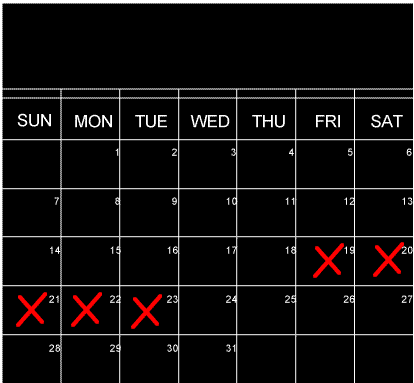|
Rhythm |

 The rhythm method of contraception involves avoiding unprotected
intercourse during the fertile time.
The rhythm method of contraception involves avoiding unprotected
intercourse during the fertile time.
Ovulation occurs approximately 14 days prior to the onset of the menstrual flow.
For women with regular, predictable menstrual periods, this means that by avoiding unprotected intercourse around the time of ovulation, pregnancy can be prevented.
Fertilization must occur within 24 hours of ovulation to be successful. Sperm can appear at the end of the fallopian tube within 10 minutes of male orgasm and can remain there for at least 48 hours, sometimes longer.
For a woman with regular, predictable periods occurring every 28 days, avoiding unprotected intercourse from approximately day #9 through day #19 (5 days on either side of the expected ovulation) will provide reasonable protection against pregnancy (70-80%). Failures occur because of:
- Earlier than expected or later than expected ovulation.
- Sperm living longer than expected in the fallopian tube.
For women with longer menstrual cycle frequencies (32 days, for example), the days to avoid unprotected intercourse should be adjusted. For a 32-day cycle, ovulation usually occurs 14 days prior to menses, on day #18. This means avoiding unprotected intercourse from day #13 through day #23.
If fewer than 5 "off days" on either side of ovulation are used, this method will be less effective. If more than 5 "off days" are used, this method becomes more acceptable. It can never be 100% effective, however, since pregnancies have been recorded following intercourse on any day of the menstrual cycle.
If an annual failure rate of 20-30% is not acceptable, or if menstrual periods are irregular, other forms of contraception may prove more satisfactory.